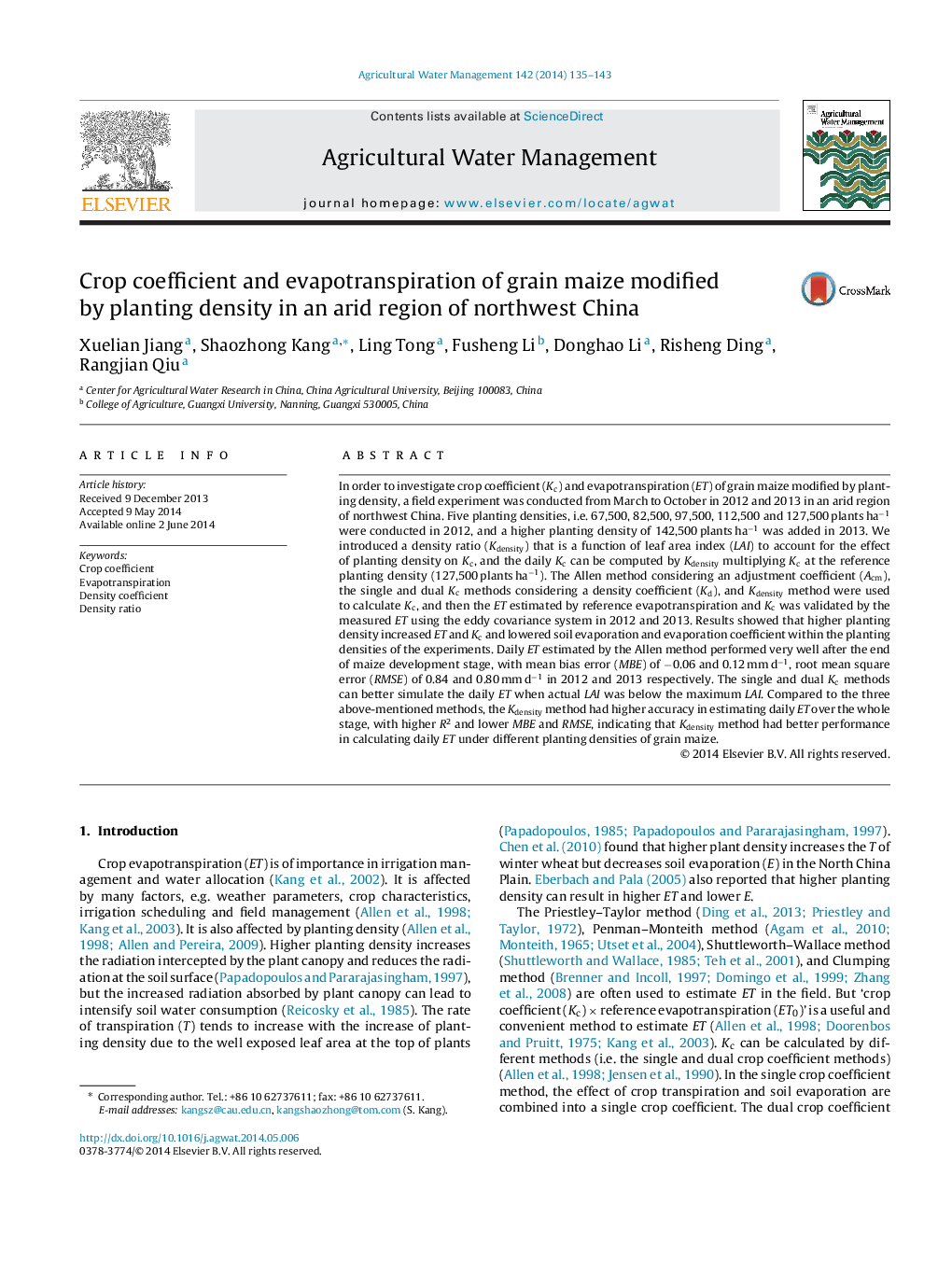| کد مقاله | کد نشریه | سال انتشار | مقاله انگلیسی | نسخه تمام متن |
|---|---|---|---|---|
| 4478603 | 1622937 | 2014 | 9 صفحه PDF | دانلود رایگان |
• ET and Kc with different plant densities were compared.
• The relationship between Kc and LAI was investigated.
• A relatively simple and accurate method with density ratio (Kdensity) to calculate Kc and ET was developed.
• The performance of four methods calculating Kc was evaluated.
In order to investigate crop coefficient (Kc) and evapotranspiration (ET) of grain maize modified by planting density, a field experiment was conducted from March to October in 2012 and 2013 in an arid region of northwest China. Five planting densities, i.e. 67,500, 82,500, 97,500, 112,500 and 127,500 plants ha−1 were conducted in 2012, and a higher planting density of 142,500 plants ha−1 was added in 2013. We introduced a density ratio (Kdensity) that is a function of leaf area index (LAI) to account for the effect of planting density on Kc, and the daily Kc can be computed by Kdensity multiplying Kc at the reference planting density (127,500 plants ha−1). The Allen method considering an adjustment coefficient (Acm), the single and dual Kc methods considering a density coefficient (Kd), and Kdensity method were used to calculate Kc, and then the ET estimated by reference evapotranspiration and Kc was validated by the measured ET using the eddy covariance system in 2012 and 2013. Results showed that higher planting density increased ET and Kc and lowered soil evaporation and evaporation coefficient within the planting densities of the experiments. Daily ET estimated by the Allen method performed very well after the end of maize development stage, with mean bias error (MBE) of −0.06 and 0.12 mm d−1, root mean square error (RMSE) of 0.84 and 0.80 mm d−1 in 2012 and 2013 respectively. The single and dual Kc methods can better simulate the daily ET when actual LAI was below the maximum LAI. Compared to the three above-mentioned methods, the Kdensity method had higher accuracy in estimating daily ET over the whole stage, with higher R2 and lower MBE and RMSE, indicating that Kdensity method had better performance in calculating daily ET under different planting densities of grain maize.
Journal: Agricultural Water Management - Volume 142, August 2014, Pages 135–143
